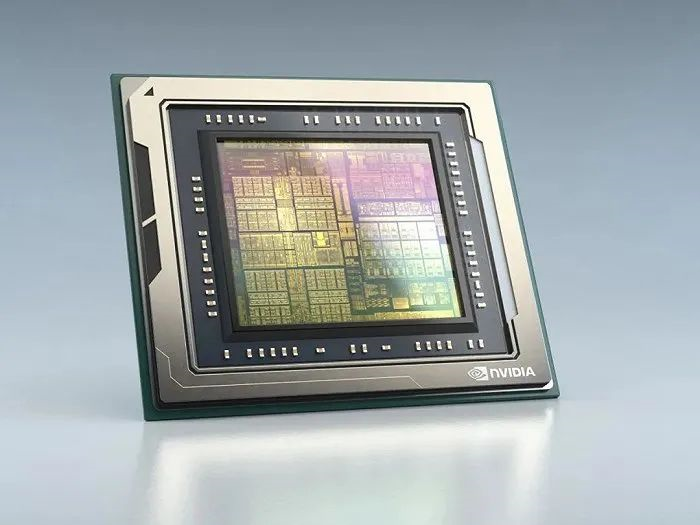Author: Dayan
Editor: Michelin
Ever since Huawei was sanctioned, the Chinese people have a tangible understanding of the term “necking” – chips.
In the past two years, the automotive industry may have experienced this more deeply.
New cars have been delivered, but the remote control keys need to be retrofitted; although five millimeter-wave radars were designed, only three could be installed first; a 13-yuan ESP chip was speculated to 4,000 yuan on the black market…
This series of farces are all caused by chip shortage. Due to chip shortage, global automobile production was reduced by nearly 9 million vehicles last year. Whether it is a new car-making newcomer like Wexiaoli or a traditional giant like Volkswagen, Ford and Toyota, everyone is equal in the face of chip shortage.
Recently, the voices of chip shortage cut-off seem to have decreased, but the psychological shadow brought by the “chip shortage” to car companies has not faded away. Instead, the relationship between car companies and chips has become more closely: investing in chip companies, jointly developing with domestic chip manufacturers, even self-developing chips. From BYD, Geely, SAIC to NIO, Ideals, XPeng, and Leapmotor, more and more car makers are racing to produce chips, trying to solve the “chip disease” with self-research.
Recently, another carmaker has embarked on the road of making chips: Great Wall Motors and Wei Jianjun, Wensheng Technology (Tianjin) Co., Ltd. jointly funded the establishment of Xin Dong Semiconductor Technology Co., Ltd., with a registered capital of 50 million yuan. The business scope of Xin Dong Semiconductor includes IC design, IC layout design agency services, IC manufacturing, etc.
Can carmakers cure the disease of being “necked” by chips with self-research?
Layout chips, car companies have been “planning for a long time”How many chips are there in a car? According to statistics, a new energy vehicle has approximately 1,500 chips aboard. Just one nail-sized chip can cause a car to “choke”, like the ESP chip that made global car companies collapse last year.

Apart from the sense of crisis caused by the “choke” and price hikes, chips are also directly related to core intelligent electronic architectures and intelligent cabins and driving functions. Therefore, car companies have been “planning for a long time” regarding chip layout.
BYD is one of the earliest domestic car companies to lay out in the chip field. In 2002, BYD established an integrated circuit design department, which started at almost the same time as BYD’s vehicle and battery businesses. At that time, the demand for chips in the auto industry was not as strong as it is now. BYD experienced a stage of massive investment and extremely low profit margins. It was only recently that the advantages of early deployment began to emerge.
During the chip crisis in the past two years, BYD, relying on its own chip industrial chain deployment and advantage in large order scale, has been affected by the shortage of chips to a lesser extent, and has leapt to the first place in sales of new energy vehicles.
BYD Semiconductor not only can be self-sufficient, but also provides chips for other domestic brands. It has entered the supply system of car companies such as XPeng, Voyah, Xiaokang, and Changan and has launched plans to be listed independently.
 Perhaps it is BYD’s lessons learned that have allowed domestic car companies to see the “sweetness” of chip layout. More and more car companies have embarked on the road of self-developed chips: NIO has established an independent hardware department “Smart HW” and self-developed autonomous driving chips; Li Auto has established a subsidiary, Ideal Intelligent, for chip design business; XPeng has established a chip R&D team; Geely and ARM China jointly established the chip company Horizon Robotics, and so on.
Perhaps it is BYD’s lessons learned that have allowed domestic car companies to see the “sweetness” of chip layout. More and more car companies have embarked on the road of self-developed chips: NIO has established an independent hardware department “Smart HW” and self-developed autonomous driving chips; Li Auto has established a subsidiary, Ideal Intelligent, for chip design business; XPeng has established a chip R&D team; Geely and ARM China jointly established the chip company Horizon Robotics, and so on.
Even Great Wall, which recently announced the self-developed chip, has frequently made moves in the chip field over the past two years.
In early 2021, Great Wall Motors strategically invested in the domestic chip company Horizon Robotics to seek a more reliable guarantee for its self-developed autonomous driving chips. Its subsidiary, Honeycomb Yichuang, then landed its third-generation semiconductor module testing and manufacturing base, with the project planning a production capacity of 1.2 million sets of vehicle-level modules per year. In the field of power semiconductors essential to the three-electric system, Great Wall Motors and Suntan Semiconductor signed a strategic agreement to jointly develop a third-generation new wide-bandgap semiconductor silicon carbide applied in new energy vehicles.
Over this year, Great Wall’s participation in the chip field has gradually deepened, from pure capital investment to the input of packaging production lines, joint development, to the establishment of Chip Dynamics Semiconductor.
Self-developed chips, especially MCU chips, have been one of the protagonists of chip shortages over the past two years.
It’s strange to think that it’s not the high-end intelligent cockpit chips with a process node of 7nm or 5nm or the high-performance intelligent driving chips with computing power exceeding 100TOPS+ that choke the fate of vehicle production, instead, it’s the seemingly “not high-end” MCU chips, with their process nodes mainly at 28nm and 56nm, and even many chips above 90nm.
As electronic technology advances, MCU chips are pervasive in fields such as vehicle power and assisted driving.
From the perspective of chip manufacturing process and design, the difficulty of such chips is not significant, as there are currently more than 100 MCU chip manufacturers in China, according to statistics. However, there are few who can meet the vehicle standard.
The complex and harsh environment of vehicles, far exceeding the service life of consumer electronics products, as well as the reliability and stability requirements that affect lives, have led to a sharp increase in the difficulty of vehicle standard MCU chips.

For this reason, MCU provides an opportunity for car companies to enter the chip race. Technologically speaking, it reduces the relative threshold and fills in the gaps in their own needs. In terms of the market, there are not many domestic manufacturers that can meet the demand, and the competition is not yet fierce. Therefore, whether it is the Great Wall, which will make chips this time, or other self-developed chip car companies, starting with MCU on-board is an opportunity.
However, how to meet the harsh working environment, service life requirements, and stability of on-board chips, and how to break the monopoly of foreign chip companies such as Infineon Technologies, NXP, Renesas, and Texas Instruments are the problems that every entrant must face.

Advanced process chips, the key to winning the future
Just recently, Cruise, a self-driving company under General Motors, announced that it is developing its own autonomous driving chip.
If Chinese auto makers chose to develop their own chips due to concerns of being “held by the neck”, the reason for General Motors to choose self-research is very simple – “autonomous driving chips (GPUs) are too expensive.”
Whether it is the autonomous driving chip that Cruise considers expensive, or the intelligent cockpit chip, they are all representative of advanced process chips in automobiles. Taking the commonly used NVIDIA OrinX autonomous driving chip and the Qualcomm 8155 intelligent cockpit chip as examples, both are 7nm processes.

The scarcity of advanced process chip technology and demand far exceed supply, making it difficult for auto makers to have bargaining power. More importantly, this type of chip directly determines the competitiveness of a car in smartization.
Therefore, many auto makers have chosen to develop chips themselves, directly choosing the high-difficulty mode of autonomous driving chips. For example, Tesla, which started self-researching chips early on and is now competing head-to-head with NVIDIA in release conference PPT.

Taking autonomous driving chips as an example, autonomous driving is an embedded system that requires high coordination of software and hardware. The differences in autonomous driving algorithms between different companies are more obvious, which means that chip customization is necessary to maximize research and development needs and achieve differentiation.
In the past two years, a large number of car companies have switched from Mobileye to NVIDIA for self-driving chips, in part because NVIDIA Orin X offers higher openness. Many car companies have also jointly developed and cooperated with domestic chip manufacturers such as Horizon to better achieve software and hardware coordination.

On the other hand, the trade war between the US and China continues to escalate, and the chip industry has become the biggest tool for the US to suppress China, with chips no longer just an industry but a national strategy. Among them, advanced process chips are the first target.
From the EDA software required for chip design in the upstream, to the ASML lithography machines indispensable for foundry chips, to high-end GPU chips such as NVIDIA’s A100 and H100 for cloud-scale model training and other high computing applications, the US is conducting an all-round crackdown on China to contain its strategic rise.
Although the demand for self-developed advanced process chips is urgent, whether it is self-developed chips or tackling advanced process chips, the difficulty is not small. The higher the chip process, the higher the internal integrated circuit density, the smaller the negative effects such as distributed capacitance and signal crosstalk, and the lower the required working voltage, so the work efficiency is higher. This directly increases the investment and difficulty in developing a chip.
According to relevant data, the pre-design cost of a 7nm chip can be as high as about RMB 2 billion. The post-design chips are also expensive, with Huawei’s single-chip cost after designing its own chip being as high as about RMB 200 million.
Even if the product can pass the interview successfully, a SoC chip still needs a million-level shipment volume to support continuous R&D investment.
Moreover, in addition to the high R&D investment, chips are also a field with a long industrial chain. Each link of design, production, packaging, and testing has its own responsibilities. Even if the design is done, any sudden situation in the subsequent links may affect the final delivery of the product.
Conclusion
The “stumbling block” of chips will eventually have to be solved by chips. Especially with the increasing dependence on chips for smart cars, car companies are also increasingly emphasizing the importance of mastering chips.
Will car companies’ self-research and development of chips become a trend? Not necessarily, because not every car company can go through the huge capital and talent investment and endure the long R&D cycle like BYD and Tesla, and have a huge shipment volume to digest their own developed products. It can be said that these factors are all necessary for self-research of chips.
However, with the increasing degree of intelligence, especially in the domains of automatic driving and intelligent cockpit, it is an inevitable trend for car companies to become more deeply involved in chip design and development in order to achieve higher software and hardware integration and differentiation.
This article is a translation by ChatGPT of a Chinese report from 42HOW. If you have any questions about it, please email bd@42how.com.
